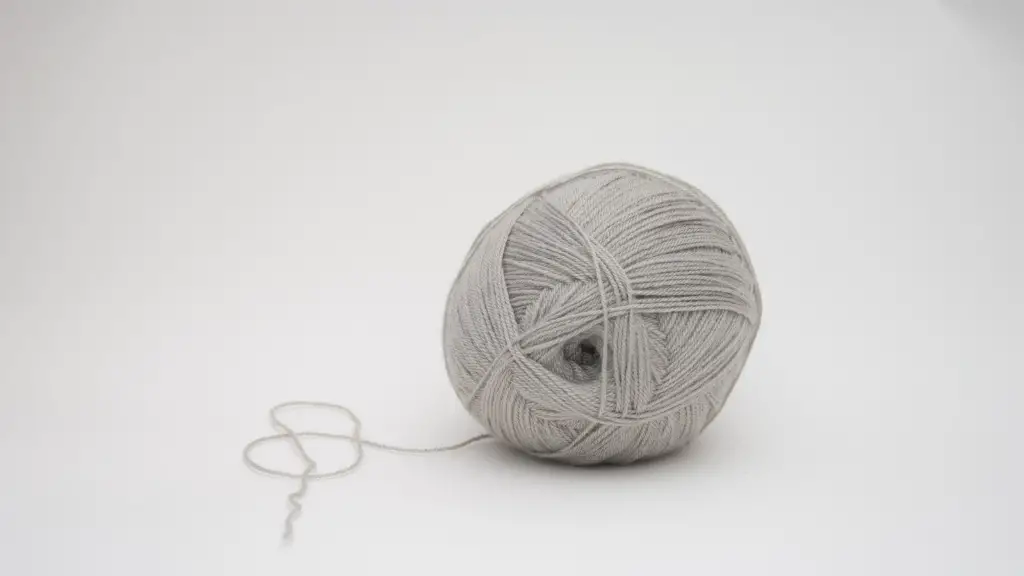What is Overcast Stitch?
Overcast stitch is a stitching technique used for finishing the raw edges of a fabric. It is more commonly used for knit fabrics, but can also be used for woven fabric to produce a neat and finished look. Usually overcast stitching consists of threads that are attached along the seam line to secure the seams and reinforce the stitching. It gives strength to the seam and prevents it from coming apart.
Choosing the Right Needle and Thread
Before beginning to overcast stitch on a sewing machine, it is important to choose the right type of needle and thread. It is best to use a sharp needle, such as a universal needle or a top stitching needle, since these needles can pierce through the fabric with ease. As for thread, it is better to use all-purpose thread for general sewing projects, or for more demanding projects, such as stretch fabrics, use of a specialist thread such as a stretch or ballpoint thread is recommended.
Setting Up the Sewing Machine
When setting up the machine for overcast stitch, the presser foot should be changed to the overcast foot for more precise and even stitching. The tension must also be adjusted so that the thread from the top of the fabric is not visible from the bottom, and vice versa. Additionally, the stitch length should be set to the desired level – usually, a medium or long stitch is preferable for this stitch type.
Stitching Process
When stitching, it is important to place the machine at the right angle to the fabric and ensure that the needle is penetrating the fabric close to its edge. As the needle enters and exits the fabric, the thread should be pulled along. This will help to secure the thread and keep the edges of the fabric together. The stitch can be worked either in one continuous line or in two, zig-zag lines.
Finishing the Overcast Stitch
When the overcast stitch is completed, the needle should be placed back in the fabric and the thread should be pulled carefully. Snip the thread, leaving about three inches of tail, and then turn the fabric to the back and tie a knot at the end of the thread. This will help to keep the stitch secure and prevent it from unraveling.
Maintaining the Overcast Stitch
Once the overcast stitch is complete, it is important to take good care of it. To prevent the stitch from becoming loose and gaping, it is important to launder the item with care or to exclusive hand wash. Furthermore, when pressing the fabric, it is important to ensure that the iron is not touching the overcast stitch as this could cause it to become undone.
Troubleshooting Common Issues
If the stitches become loose or start to unravel, it is best to remove them and start again. If the stitches are not tight enough, the tension should be adjusted. If the stitch looks uneven, it could be that the presser foot is not at the correct angle or the needle is not penetrating the fabric close to its edge.
Using Specialty Foot
In some cases, it might be necessary to use a specialty foot for overcast stitch. There are special presser feet available for a variety of different fabrics, such as denim or knitted fabrics, where a regular foot cannot be used. These feet are designed to create a more secure stitch and are a great option for those fabrics that need an extra bit of reinforcement.
Making Use of Twin Needle
In certain circumstances, twin needle may be useful for overcast stitch. This is a double needle, which should be attached to a special machine set-up and allows for two lines of stitching to be created at the same time. Twin needle is particularly useful for creating a decorative stitch to the edge of the fabric.
Using Narrow Edge Stitch
For those fabrics that require a more delicate finish, a narrow edge stitch is the perfect solution. This stitch is worked close to the edge of the fabric and can create a very neat and tidy finish. It is important to ensure that the stitch length is set appropriately so that the stitch is not too long or too tight.
Types of Overcast Stitch
There are a variety of different types of overcast stitch that can be used to create a neat and professional finish to the edges of the fabric. The basic straight stitch is the most common and is used for most general sewing projects. Other types of overcast stitch include zig zag or zig zag blanket stitch, overlock stitch, and decorative stitch.
Understanding Different Fabrics
It is important to understand the different types of fabric when preparing to overcast stitch, as different fabrics require different techniques. For example, heavier fabrics such as denims will require a longer stitch, whereas lighter fabrics such as cotton or linen may need a shorter stitch. Similarly, the thread and needle used will depend on the fabric.
Tips for Successful Overcast Stitching
To achieve a successful overcast stitch, it is important to prepare the fabric correctly, use the right type of needle and thread, and adjust the tension and stitch length accordingly. It is also important to maintain the stitch correctly by laundering the item with care, and to avoid pressing the fabric on the overcast stitch. Finally, it is important to take extra care with specialist fabrics such as knitted fabrics and denims and to use a specialty foot or twin needle where appropriate.



